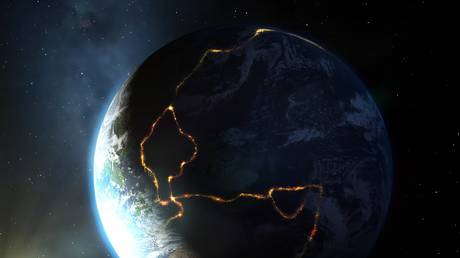
For the first time in history, scientists have confirmed the existence of mysterious and extremely powerful ‘boomerang’ earthquakes, throwing open the possibility of even more devastating types of seismic events.
Researchers led by Stephen Hicks, an earthquake seismologist at the Imperial College London, studied data from 39 seismometers placed near the Mid-Atlantic Ridge to monitor seismic activity and finally found evidence of the oft-theorized but never witnessed boomerang quake, aka “back-propagating rupture.”
A 7.1-magnitude earthquake struck along a crack in the seafloor 650 miles off the coast of Liberia in August 2016, powerful but somewhat unremarkable, until the seismic data showed a major anomaly had just occurred.
“Even though the fault structure seems simple, the way the earthquake grew was not, and this was completely opposite to how we expected the earthquake to look before we started to analyze the data,” Hicks said.
The deep sea temblor started deep underground, rushing eastward towards the Mid-Atlantic Ridge before turning back on itself and rising up through the upper section of the fault at supershear speeds at roughly 11,000 miles per hour, fast enough to make it from New York to London in under 20 minutes.
The deep sea quake traveled so fast, it created the geological equivalent of a sonic boom in the process.
“To the best of my knowledge, this is the first time it has been reported,” said geophysicist Yoshihiro Kaneko of GNS Science in New Zealand.
Mystery remains as to how frequent such boomerang quakes are and how many travel fast enough to create these underground “sonic booms.” Some in the scientific community have even begun to speculate that the magnitude-9.0 Tohoku earthquake that struck Japan in 2011 with devastating consequences may also have featured some of this boomerang rupture effect.
“This might be actually more common than we think,” Kaneko added.
Properly understanding the surprisingly complex nature of these earthquakes will help us produce better models and more accurately predict where and how temblors might strike in the future, improving early warning systems and perhaps construction methods in high-risk areas.
Like this story? Share it with a friend!




